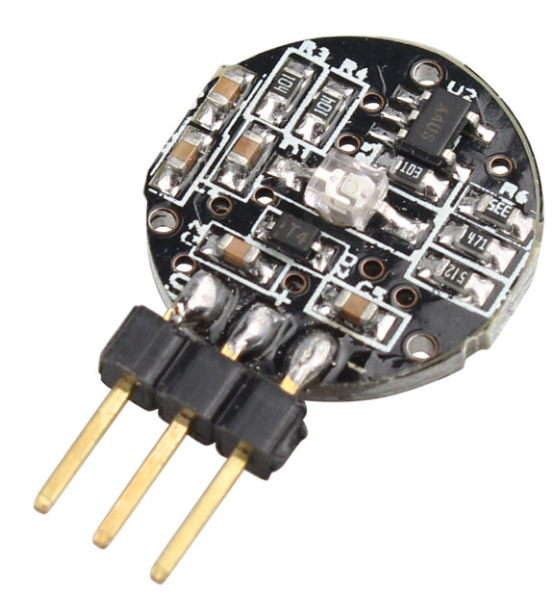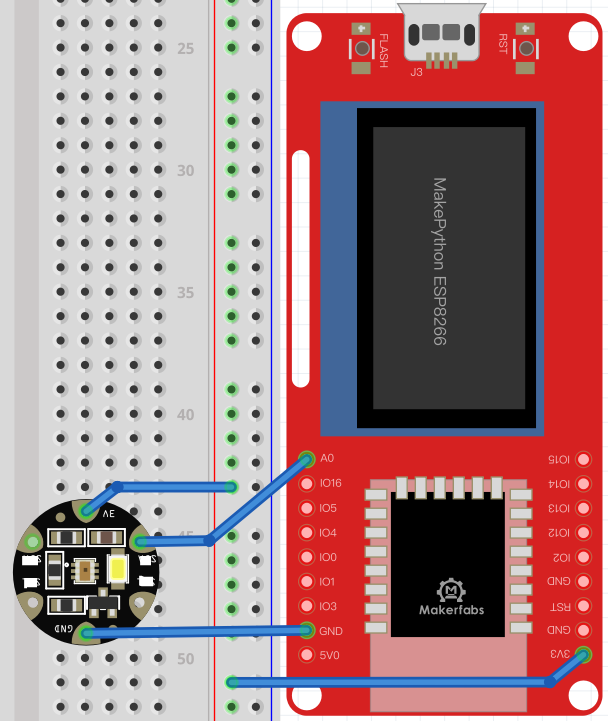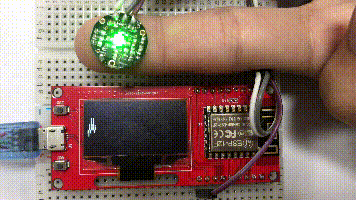A simple& cheap Pulse Sensor is a photoelectric reflex analog sensor for pulse and heart rate measurement. Wear it on finger, earlobe and so on, make use of the body tissue in the vascular pulse caused by different transmittance to measure pulse. Then the heart rate value can be obtained by simple calculation.

On the left is the s-pin of the signal output, in the middle is the positive power supply VCC (3.3v ~5V), and on the right is the negative power supply GND.
The special pin for ADC collection is IO0.The input voltage is 0V~ 1.0v and the measured value is 0~1024, The s-pin is connected to IO0, the middle pin is connected to 3V3, and the "-" pin is connected to GND:

the MicroPython codes:
#from machine import Pin,I2C,RTC
import machine
from micropython import const
import time
import ssd1306
import math
WIDTH = const(128) #Set the screen width
HEIGHT = const(64) #Set the screen high
pscl = machine.Pin(5, machine.Pin.OUT)
psda = machine.Pin(4, machine.Pin.OUT)
i2c = machine.I2C(scl=pscl, sda=psda)
oled = ssd1306.SSD1306_I2C(WIDTH, HEIGHT, i2c)
counttime=0
while True:
adc = machine.ADC(0) #Create an ADC object on an ADC pin
adcValue=adc.read() #ADC data acquisition
oled.line(counttime,40,counttime,adcValue//16,1) #Drew the heart rate
oled.show()
time.sleep_ms(1)
counttime+=1
if(counttime>127):
counttime=0
oled.fill(0) #Clear the screen
oled.show()

 Makerfabs
Makerfabs
Discussions
Become a Hackaday.io Member
Create an account to leave a comment. Already have an account? Log In.